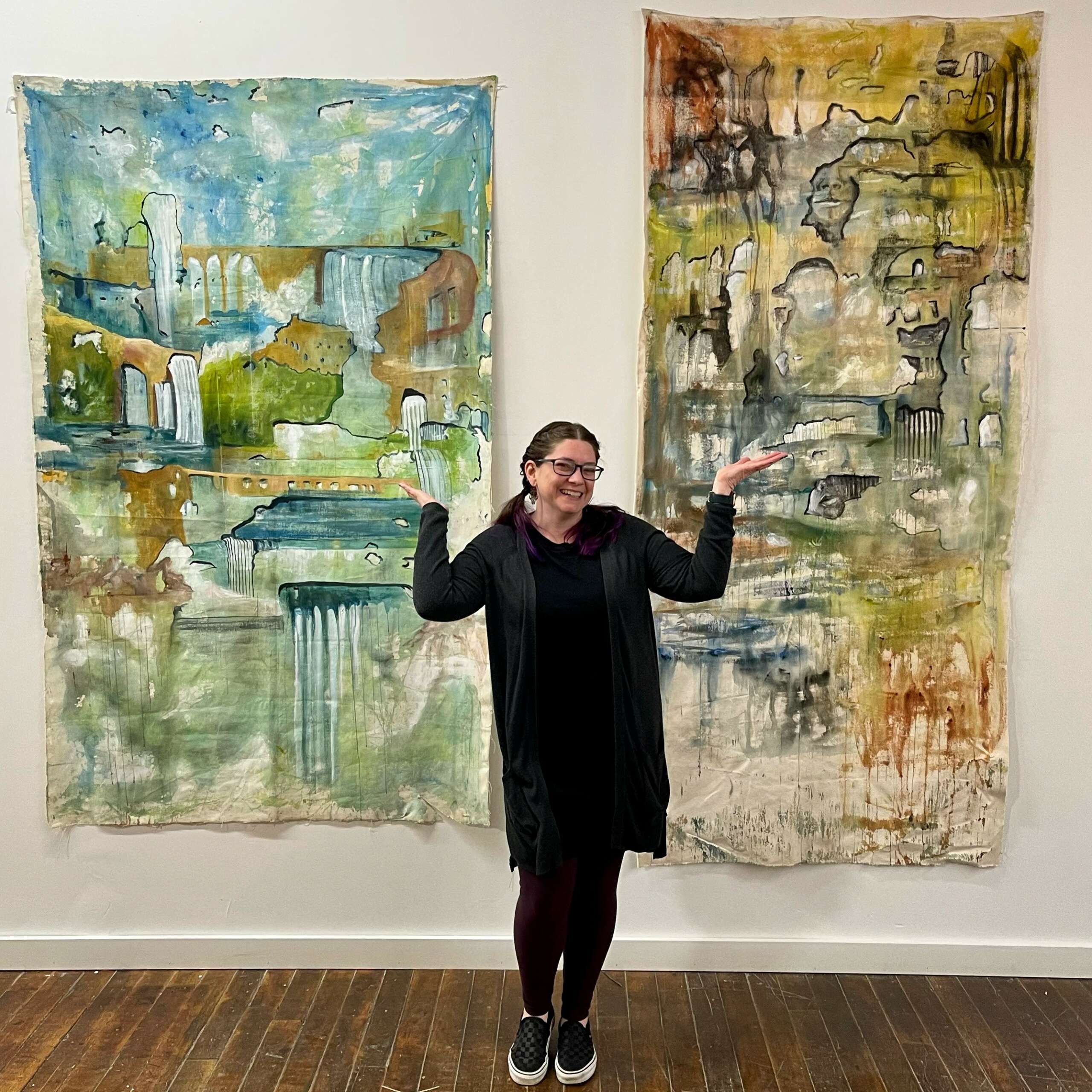Alright – so today we’ve got the honor of introducing you to Meghan Dinsmore. We think you’ll enjoy our conversation, we’ve shared it below.
Meghan, appreciate you joining us today. Can you talk to us about how you learned to do what you do?
I have been learning two crafts for the past 20 years- both teaching art and creating art in my studio. Looking back, I was very inspired in my teen years by my own art teachers. They provided a safe space to try new things and explore my creative side. That pushed me to attend Boston University’s College of Fine Arts where I met all my influential professors & fellow artists and eventually majored in Painting.
I decided to become an art teacher, getting my MFA in Studio Art Teaching right after my BFA in Painting. I secured a job as a high school art teacher and have never left! My own studio work informs a lot of my teaching practice. I try to set an example for my students, showing them that you can try new things, learn from failed experiments and keep a daily art practice going. I fully believe practice is the key to success.
Both teaching and creating art require similar things: self-reflection, risk-taking, a love of learning, planning, and making connections with your audience. In my studio, and in my sketchbooks- which I use more consistently after having my own children- I try to experiment with many different mediums and subjects. While I always come back to painting, I also love drawing and printmaking and the occasional mixed media project. My best advice for creatives is to find people who inspire you- whether it is their finished work or their process- and then learn from them. Anytime I can take a class with someone I admire or have a studio day with other artists, I feel renewed and it affects my work in the best way possible. When your process becomes too stagnant and you have an assembly line feel happening in your studio I think it is time to shake it up and learn something new. For me, learning a craft isn’t about perfection- it is about being open to new ideas, materials and processes. I don’t think I will ever be done learning and that’s what keeps me excited about making art every day.
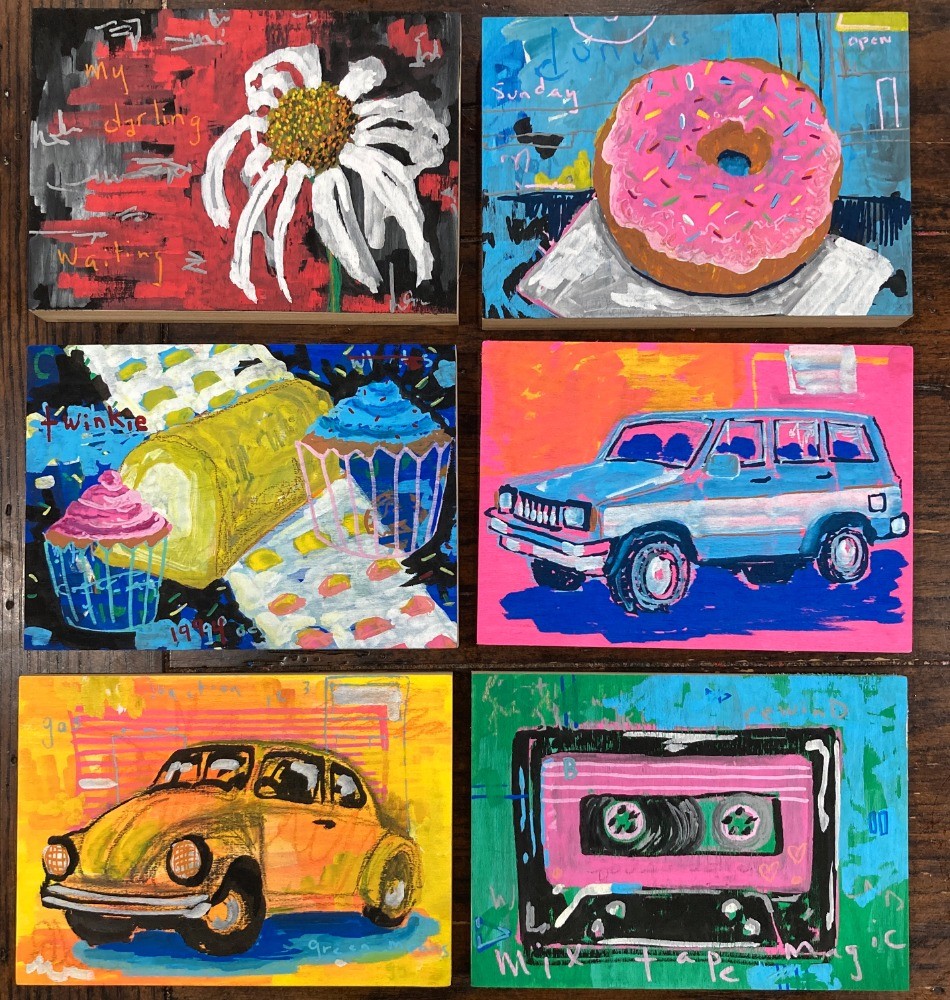
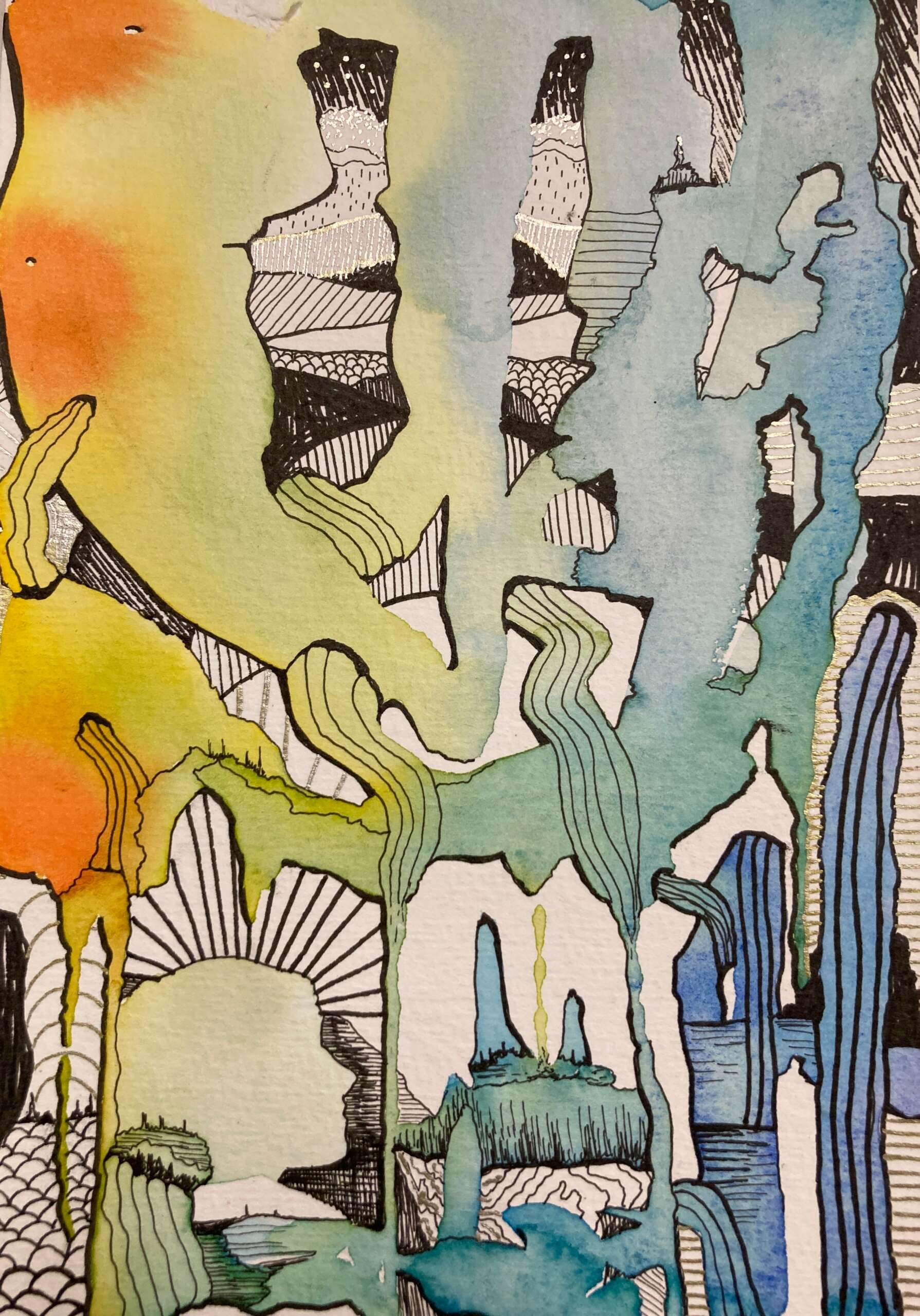
As always, we appreciate you sharing your insights and we’ve got a few more questions for you, but before we get to all of that can you take a minute to introduce yourself and give our readers some of your back background and context?
Currently I am the K-12 Visual Art Coordinator for a town on the South Shore of Massachusetts. I oversee the art curriculum for all the schools and am able to teach drawing & painting classes at the high school. I also have my art studio and serve on the board for an art association called 4th Floor Artists.
In my studio I work on lots of different projects. Anytime I have a visitor they ask how many artists share the space because my work varies so much. Some weeks I am creating figure drawings, other weeks it is abstract dreamscapes or it might be posca marker robots. I tend to have “seasons” of artwork! I get on a printmaking kick for a few months and then decide to make pen drawings for a month. Though it may seem random, I typically have a connecting thread that pulls me in a new direction. This is one of the things I am most proud of- I am always experimenting and I don’t get stuck on one main subject or medium. My love of experimentation and learning is a guiding force in my studio practice.
The other aspect of my studio practice that I am proud of is collaboration with other artists. Anytime I can work alongside a person on a piece it is fulfilling. Sometimes this is creating zines with other creatives or working right on a painting with someone. There are two ends to this process, and I love both- working with those more experienced than me- who I learn a lot from- or working with those less experienced than me. Hopefully I can show them something new and inspire them to keep going on their artistic journey.


What do you find most rewarding about being a creative?
Art is a great connecting force and I love bringing people together at art shows and in the studio or classroom. Anytime I can help foster a sense of community through art I am reminded why I chose this career path. Making art is typically an individual pursuit, but I love when you can find a community of artists or share the arts with others. In my eyes, anyone can be part of the art community whether as a maker or a viewer. The community I teach in is thankfully very supportive of the arts, and I hope to enhance this mindset and reach those who may not think of themselves as artists. For me, art has been meditative and a way to stay in the present moment- so if I can help people have a peaceful, creative moment in their day I strive to do that. I don’t think everyone has to draw realistically to be an artist- there are so many creative avenues that people can explore and I hope to get that message out in the community. As a teacher, when I hear from a former student that they remember an art project from high school, or they ended up studying art or maybe they just got back into printmaking as an adult- that is a huge reward!
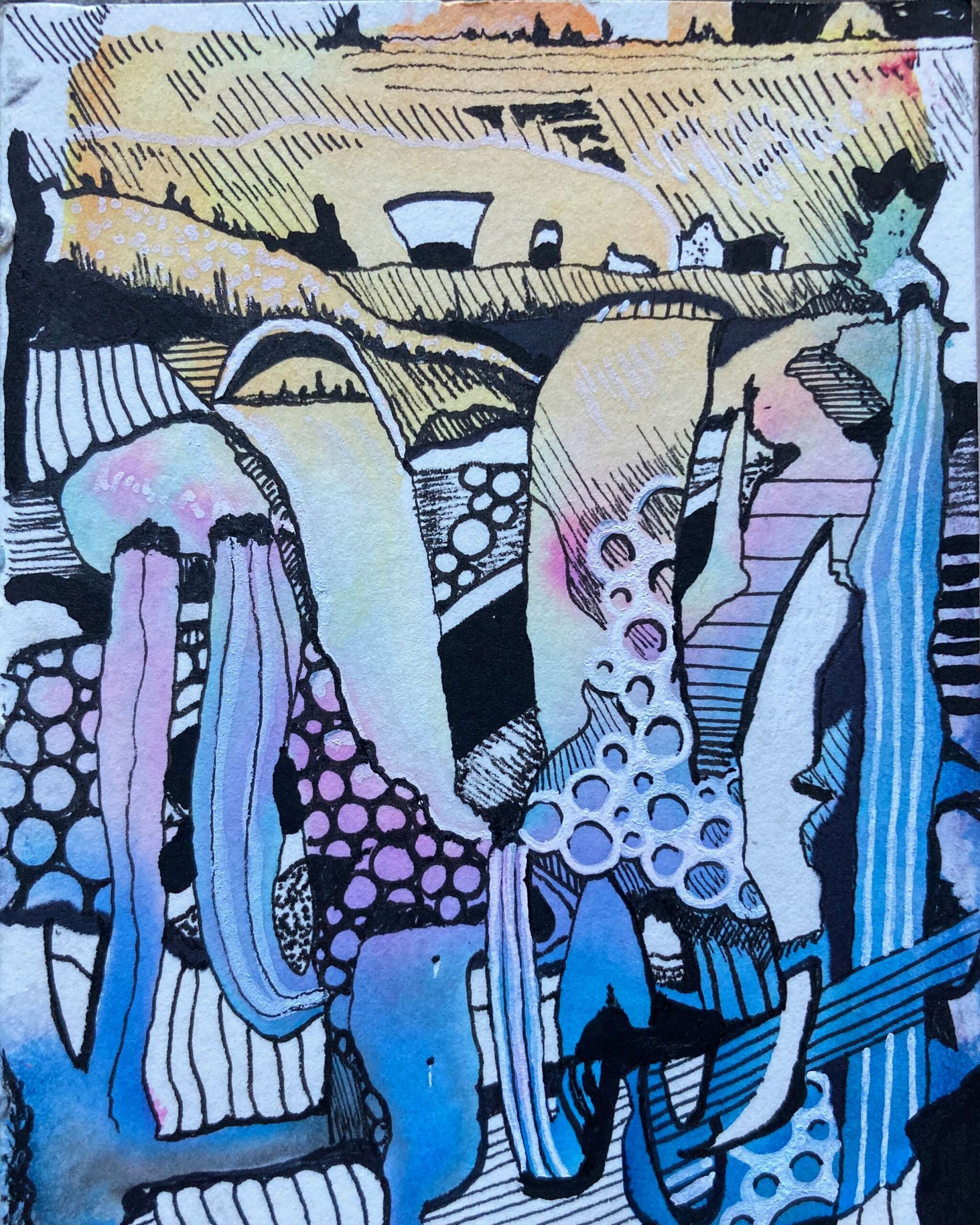
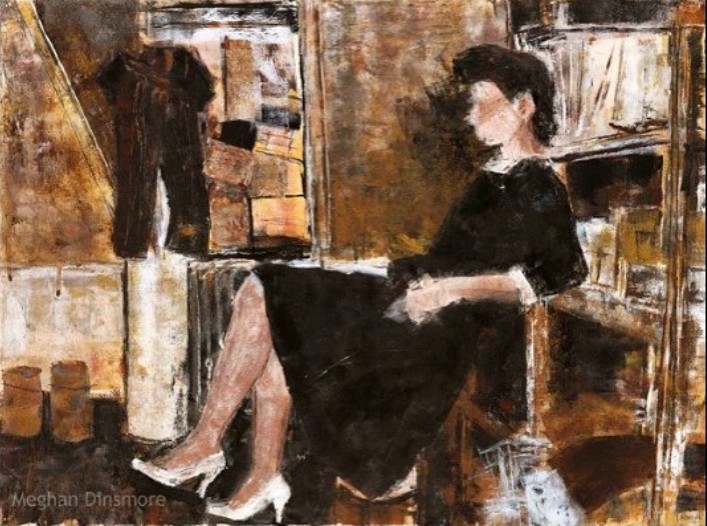
Do you think there is something that non-creatives might struggle to understand about your journey as a creative? Maybe you can shed some light?
I do think it is hard to understand why someone would choose a creative journey with more risk involved versus finding a “regular” job where the pay is stable. I hear from many parents of high schoolers that art school is nerve-wracking because they don’t want their kid to be a starving artist. I am here to say I have seen so many success stories from those art school graduates! Just because you are being creative and perhaps following a nontraditional path doesn’t mean you won’t be successful. I am lucky that I can balance my art-making passion with my teaching career, both of which are extremely fulfilling for me.
I want people who are non-creatives to understand art does play an important role in society and for many individuals. I think it is often downplayed in a non-creative world but where would we be without designers, writers, actors, musicians, artists? When I’m teaching art to others I am teaching them to see their world differently, not just how to draw a still life- although I do that part too!
In my opinion, it’s important that people define success for themselves. What measures success for you may be very different for someone else. There are always going to be struggles, as well as rewards, so you need to find a good balance that works for you and makes you feel fulfilled at the end of the day. I often think of the saying “how you live your days is how you live your life” and that’s what guides me on my journey.
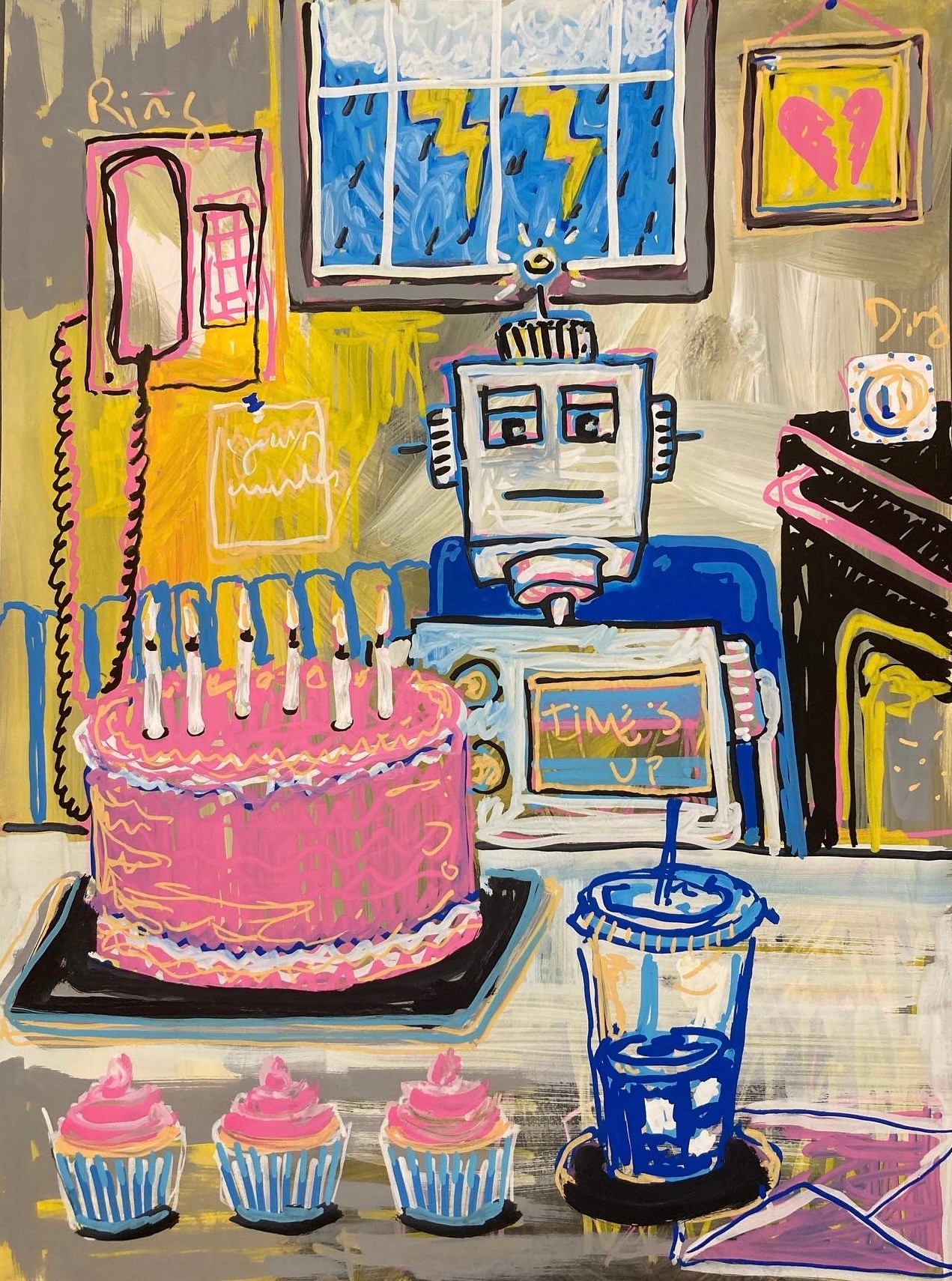
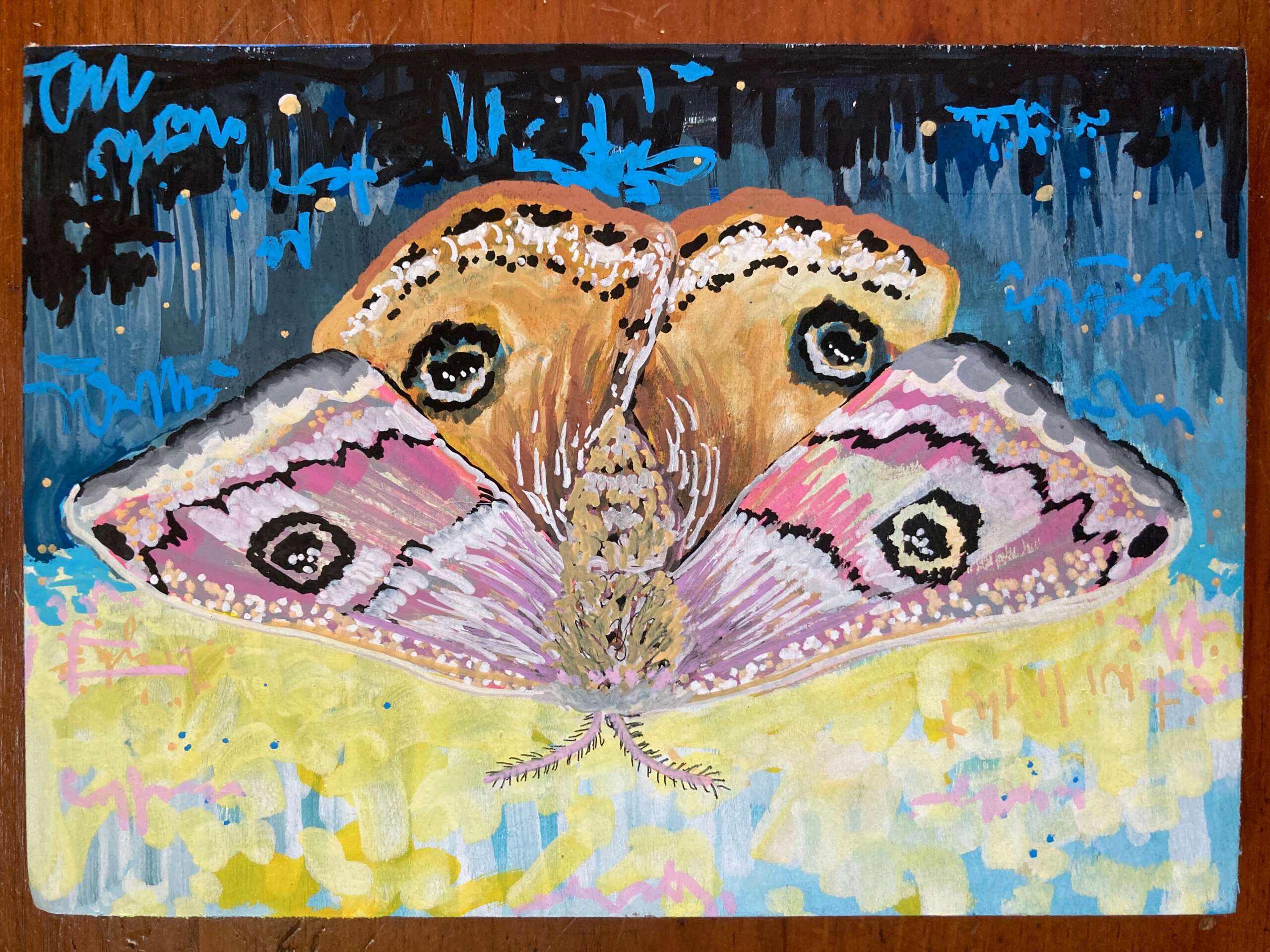
Contact Info:
- Instagram: @dinsbots_art


